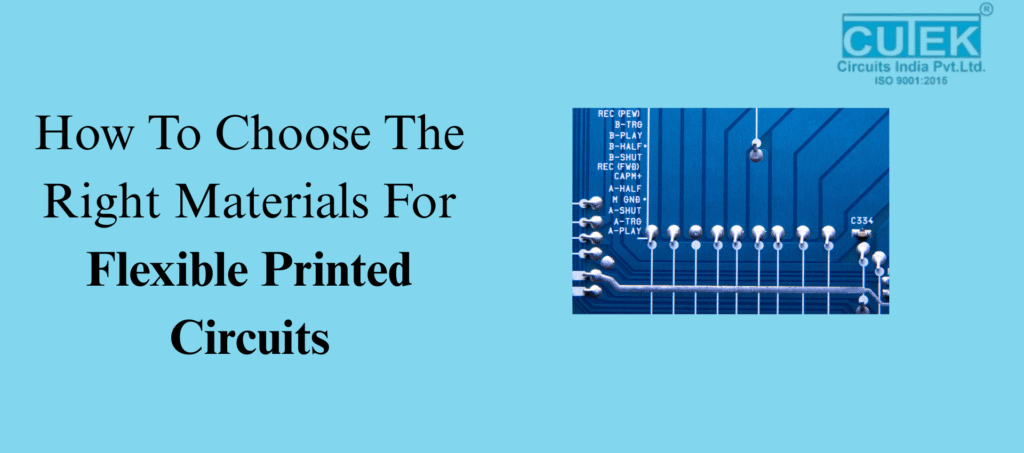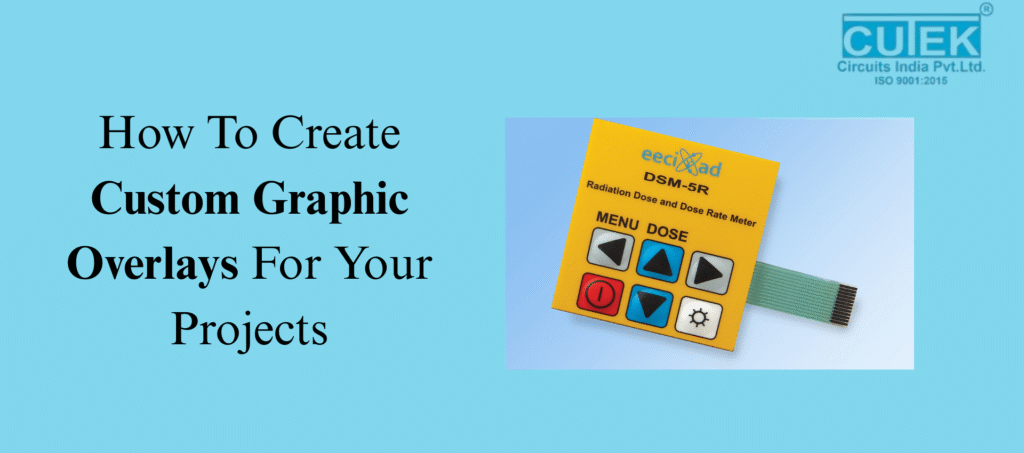How To Choose The Right Materials For Flexible Printed Circuits

Flexible printed circuits (FPCs) are a cornerstone of modern electronics, enabling compact, lightweight, and highly reliable designs in applications like wearables, medical devices, and aerospace electronics. Selecting the right materials for FPCs is critical because it directly impacts flexibility, durability, thermal performance, and electrical reliability. In this blog, we answer the most important questions engineers and designers face when choosing materials for flexible printed circuits, helping you make informed decisions for your next project. What Factors Should I Consider When Selecting Materials for Flexible Printed Circuits? Choosing materials for flexible printed circuits requires a holistic approach, as every layer affects performance, cost, and reliability. Here are the key considerations: Substrate Material The substrate is the base layer that provides mechanical strength and flexibility. Polyimide: High heat resistance, excellent chemical stability, ideal for harsh environments. Polyester (PET): Cost-effective, suitable for low-temperature applications, but less durable.Tip: Choose substrates based on operating temperature, bend radius, and environmental conditions. Conductors Copper is the standard conductor due to excellent electrical conductivity. Copper thickness: Thicker copper improves current capacity but reduces flexibility. Surface finishes: Gold, tin, or ENIG finishes enhance solderability and prevent corrosion.Tip: Balance conductor thickness and flexibility according to circuit requirements. Adhesives Adhesive-based FPCs: Easier to manufacture, provide mechanical strength. Adhesiveless FPCs: Thinner, more flexible, better for high-performance applications, but costlier.Tip: Match adhesive choice with flexibility and durability needs. Protective Layers (Coverlays) Coverlays protect circuits from moisture, chemicals, and mechanical wear. Materials must be compatible with the substrate and operating conditions.Tip: Ensure coverlay material enhances reliability without compromising flexibility. Environmental and Mechanical Requirements Consider bending cycles, vibration, temperature changes, and chemical exposure. High-performance FPCs, such as in automotive or medical devices, require materials that endure harsh conditions. Industry Standards Follow IPC-2223 (Flexible Circuit Design) and UL certifications to ensure safety and performance. Certified materials reduce design risks and improve reliability. How Can I Optimize Cost, Performance, and Flexibility in FPC Material Selection? Balancing cost, performance, and flexibility is essential for successful FPC design. Here’s how to approach it: Identify Critical Requirements Determine priorities: flexibility, thermal resistance, conductivity, or durability. High-performance electronics may require polyimide and high-quality copper. Cost-sensitive applications may use polyester substrates. Hybrid Material Approaches Combine high-performance and economical materials strategically. Example: Polyimide in heat-critical areas, polyester in static regions. Collaborate with Manufacturers Manufacturers provide material performance data, including thermal expansion, bend radius, and tensile strength. They can suggest advanced options like adhesive-free layers or specialized coverlays. Testing and Validation Test prototypes for bending cycles, heat resistance, and electrical performance before production. Adjust materials if circuits fail under real-world conditions. Long-Term Reliability Ensure compatibility of all materials. Poor material matching can lead to delamination, circuit breakage, or corrosion over time. Selecting the right materials for flexible printed circuits is crucial for high-performance and reliable electronics. By carefully evaluating substrates, conductors, adhesives, coverlays, and environmental requirements, designers can create FPCs that balance flexibility, durability, and cost-effectiveness. Following industry standards and consulting with manufacturers ensures that your circuits meet both technical and operational expectations. Contact Cutek Circuits 📍 Address: 4/4 Badhe Industrial Estate, Next To Silver Star Hall, OPP. To Angaraj Hotel, Kondhwa, Pune, Maharashtra 411048, INDIA 📞 Phone: +91 92255 24304 | +91 98237 84304 | +91 87930 34304 📧 Email: info@cutekcircuits.com | sales@cutekcircuits.com 🌐 Website: https://cutekcircuits.com
How To Create Custom Graphic Overlays For Your Projects

Custom graphic overlays are essential for enhancing not only the usability but also the aesthetics and professionalism of projects, such as control panels, electronics, keyboards, and DIY devices. Moreover, they serve as a functional interface between users and the device, while simultaneously protecting the underlying components. In this guide, we will answer the key questions about creating effective custom graphic overlays, providing detailed explanations and practical tips. What Are Custom Graphic Overlays and Why Are They Important? Definition and Purpose Custom graphic overlays are the topmost layer on devices or panels that display buttons, labels, and icons. They guide user interaction while protecting the electronics underneath. Benefits of Custom Graphic Overlays Firstly, durability: protects buttons, switches, and panels from wear. Secondly, enhanced usability: clear labeling and icons make devices intuitive. Thirdly, aesthetic appeal: gives a professional, polished look. Finally, customization: allows tailored designs for specific project requirements. Materials Commonly Used Plastic: PVC, polycarbonate, acrylic – lightweight and easy to print. Metal: Aluminum – durable for industrial applications. Vinyl: Often used for decorative or temporary overlays. Applications Control panels, electronic devices, keyboards, machinery interfaces, DIY electronics, home automation systems. How Do I Create a Custom Graphic Overlay for My Project? Step 1 – Plan Your Design First, identify project requirements, including size, button layout, and display elements. Next, decide on legends, text labels, and icons. Finally, use recommended tools such as Adobe Illustrator, CorelDRAW, or other vector-based software. Step 2 – Choose the Right Material Options: PVC, polycarbonate, acrylic, aluminum. Consider flexibility, durability, transparency, and environmental resistance. Step 3 – Create the Design File Use vector graphics for scalability and precision. Include dimensions, cut-outs, legends, icons, and color separations. Ensure high resolution and sufficient contrast for readability. Step 4 – Printing or Engraving Printing: Screen printing, UV printing, or digital printing. Engraving: Laser or mechanical engraving for durability. Protective coatings can enhance longevity and scratch resistance. Step 5 – Finishing and Application Add laminates or protective layers if needed. Apply adhesive backing for easy installation. Carefully align and attach to the device or panel. Best Practices and Common Mistakes Best Practices First, keep text legible and icons clear for usability. Next, use contrasting colors to ensure better visibility. Then, test the overlay on a prototype before final production. Finally, consider environmental factors such as heat, moisture, and chemicals. Common Mistakes to Avoid Firstly, avoid using low-resolution graphics. Secondly, ensure correct dimensions and properly aligned cut-outs. Thirdly, do not overcrowd the overlay, as it reduces clarity. Finally, avoid using incompatible materials that may warp or degrade. Creating a custom graphic overlay therefore requires careful planning, precise design, and proper material selection. Furthermore, by following best practices and avoiding common mistakes, you can produce overlays that are not only functional but also durable and visually appealing. Additionally, properly crafted overlays enhance the usability and professional appearance of your projects, while simultaneously protecting the underlying components. Contact Cutek Circuits 📍 Address: 4/4 Badhe Industrial Estate, Next To Silver Star Hall, OPP. To Angaraj Hotel, Kondhwa, Pune, Maharashtra 411048, INDIA 📞 Phone: +91 92255 24304 | +91 98237 84304 | +91 87930 34304 📧 Email: info@cutekcircuits.com | sales@cutekcircuits.com 🌐 Website: https://cutekcircuits.com
